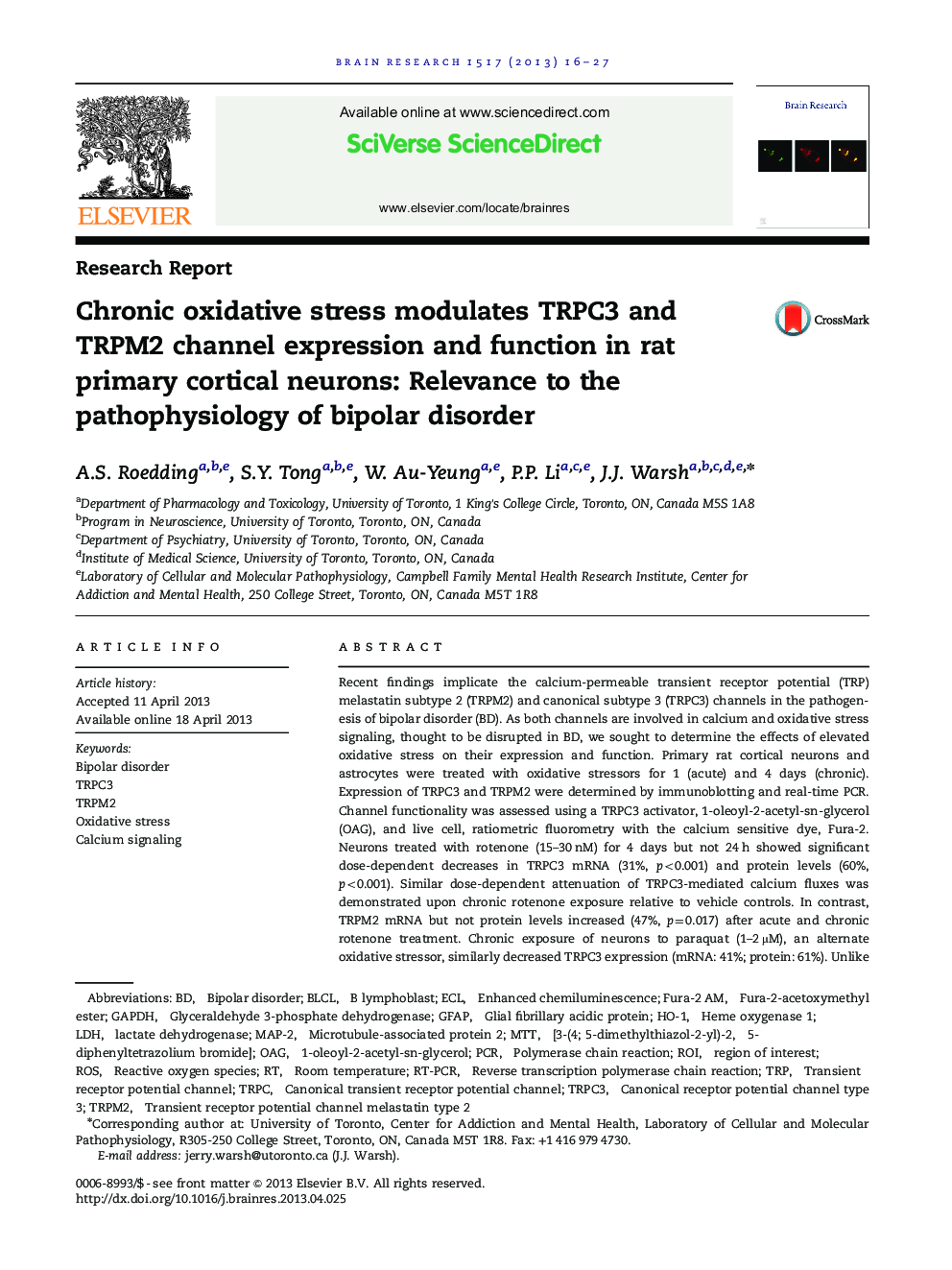| کد مقاله | کد نشریه | سال انتشار | مقاله انگلیسی | نسخه تمام متن |
|---|---|---|---|---|
| 6263836 | 1613922 | 2013 | 12 صفحه PDF | دانلود رایگان |

- An effect of oxidative stress on TRP channel expression and function is proposed.
- Exposure to mitochondrial stressors reduces TRPC3 mRNA, protein levels and activity.
- TRPM2 expression was increased by rotenone and paraquat, albeit less consistently.
- These stress-induced changes occur in rat cortical neurons but not astrocytes.
- We link altered oxidative stress markers, TRPs, and calcium dyshomeostasis in BD.
Recent findings implicate the calcium-permeable transient receptor potential (TRP) melastatin subtype 2 (TRPM2) and canonical subtype 3 (TRPC3) channels in the pathogenesis of bipolar disorder (BD). As both channels are involved in calcium and oxidative stress signaling, thought to be disrupted in BD, we sought to determine the effects of elevated oxidative stress on their expression and function. Primary rat cortical neurons and astrocytes were treated with oxidative stressors for 1 (acute) and 4 days (chronic). Expression of TRPC3 and TRPM2 were determined by immunoblotting and real-time PCR. Channel functionality was assessed using a TRPC3 activator, 1-oleoyl-2-acetyl-sn-glycerol (OAG), and live cell, ratiometric fluorometry with the calcium sensitive dye, Fura-2. Neurons treated with rotenone (15-30 nM) for 4 days but not 24 h showed significant dose-dependent decreases in TRPC3 mRNA (31%, p<0.001) and protein levels (60%, p<0.001). Similar dose-dependent attenuation of TRPC3-mediated calcium fluxes was demonstrated upon chronic rotenone exposure relative to vehicle controls. In contrast, TRPM2 mRNA but not protein levels increased (47%, p=0.017) after acute and chronic rotenone treatment. Chronic exposure of neurons to paraquat (1-2 µM), an alternate oxidative stressor, similarly decreased TRPC3 expression (mRNA: 41%; protein: 61%). Unlike neurons, rotenone treatment incurred no changes in astrocyte TRPC3 levels. These findings demonstrate that TRPC3 and TRPM2 channel expression and/or function is sensitive to the redox status of rat primary neurons and that these changes are time dependent. This provides a critical mechanistic link between altered oxidative stress markers, dysfunction of these TRP channels and calcium dyshomeostasis in BD.
Journal: Brain Research - Volume 1517, 23 June 2013, Pages 16-27